10 Stunning Plants For Winter Color – These Expert Picks Will Bring Your Garden To Life
This winter, add a welcome burst of color to borders and pots with this expert-curated selection of flowers, shrubs, and trees
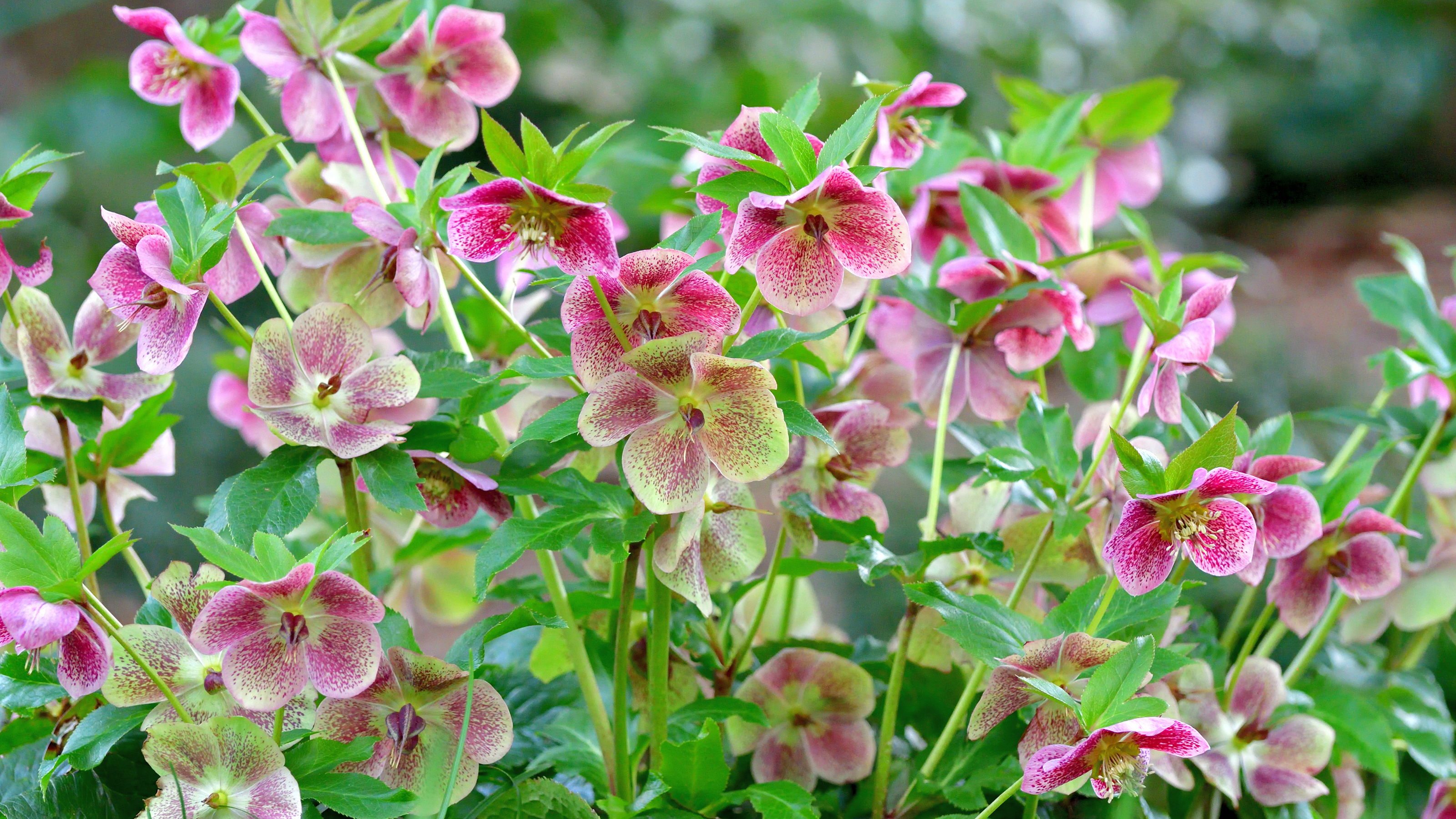

The landscape may seem barren in winter, but a few well-chosen plants can bring your garden to life.
A successful winter garden design includes a range of different colors, textures, and shapes. There are some stunning flowers for winter, but you should also include trees and shrubs for winter interest. Look at those with eye-catching foliage, vivid berries, or colored, ornamental bark.
The cleverest gardeners incorporate plants with multi-season interest, which add color throughout the year. They also maximize every inch of growing space, filling gaps in borders and growing winter patio plants in containers.
Discover the best plants to add winter color to your garden with these expert picks.
1. Witch hazel
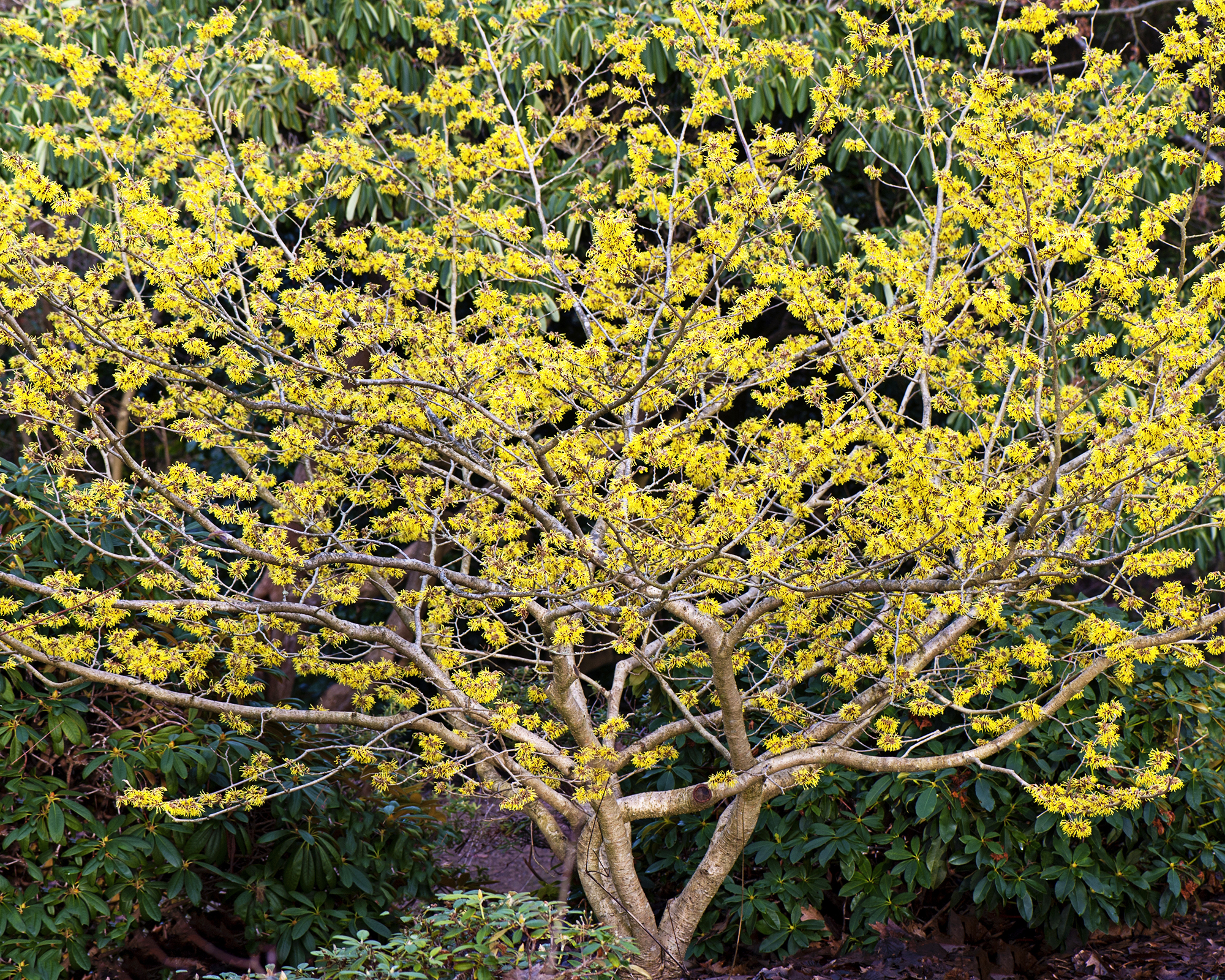
Witch hazel (Hamamelis) is a small deciduous tree or shrub that is suitable for smaller spaces.
‘It has an elegant vase-shaped habit that looks beautiful under a blanket of snow,’ says Janet Loughrey of Garden Design.
‘Spidery flowers that appear in winter provide color and fragrance at a time of year when little else is in bloom. The textured oval green leaves turn brilliant colors in fall for year-round appeal.’
Gardening tips, videos, info and more delivered right to your inbox!
Sign up for the Gardening Know How newsletter today and receive a free copy of our e-book "How to Grow Delicious Tomatoes".
Witch hazel is virtually maintenance-free and requires little or no care once established. It thrives in USDA planting zones 3 through 9.
2. Bergenia
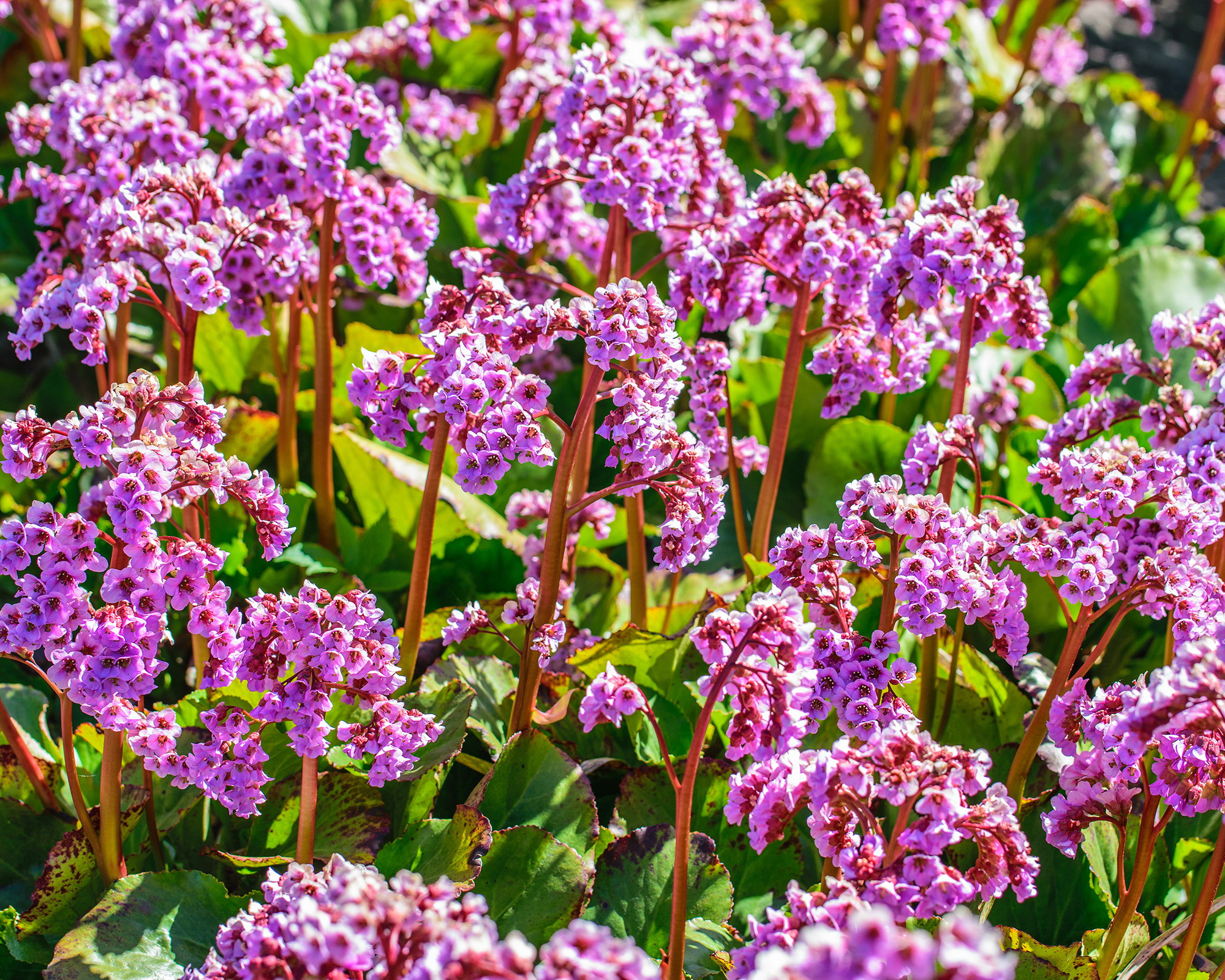
‘Bergenia is one of the prettiest perennials that you can grow for bold color in winter,’ says Ali McEnhill, co owner of The Old Dairy Nursery & Gardens. ‘The plants' large, leathery green leaves take on deep crimson to ruby red tones as the weather cools.’
Some varieties of bergenia, such as 'Winterglow' and 'Sunningdale' are particularly prized for the striking color of their winter leaves.
The plants are quite cold hardy and bloom in late winter or very early spring. In some areas, they may even flower straight through the winter.
‘Bergenias grow happily almost anywhere – including dry shade,’ adds Ali. ‘However, you will want to grow them in full sun on well-drained soil for the best winter color.’
3. Primroses
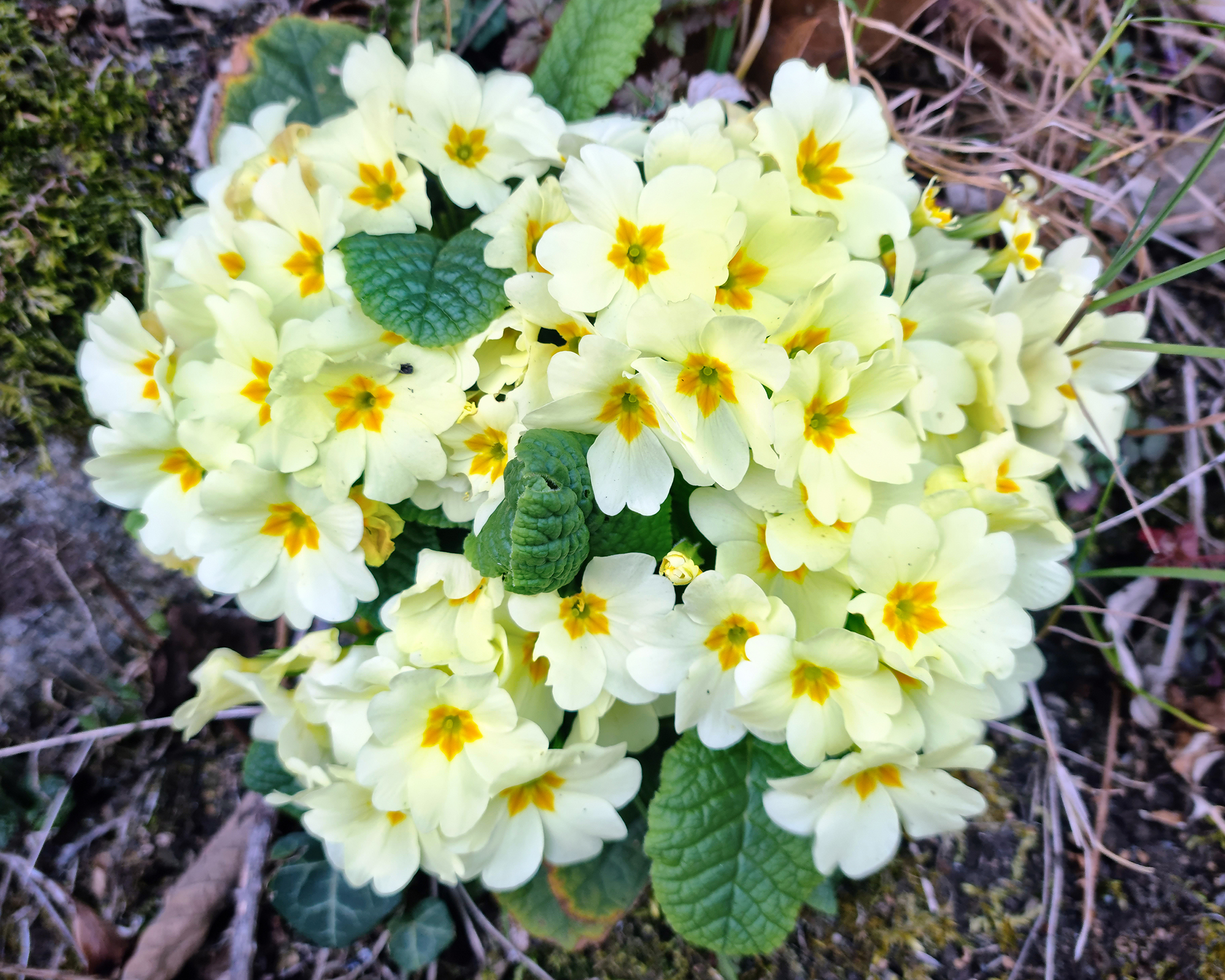
Primroses are a beautiful sight in the garden in late winter and early spring. ‘The classic pale-yellow primrose tends to bloom from February, but I find that if placed in a sunny spot, it can flower from January,’ says plantswoman Sarah Raven.
One of the main things Sarah loves about primroses is that they are edible. ‘In a pretty peach shade, mixed with apricot and a touch of plum, I use primrose to scatter across cakes and puddings and add the petals to salads.
‘Every single one of this flower family is edible, and they are also cut-and-come-again, which means the more you harvest the more you will get.’
Grow primroses in USDA hardiness zones 4-8.
4. Camellia
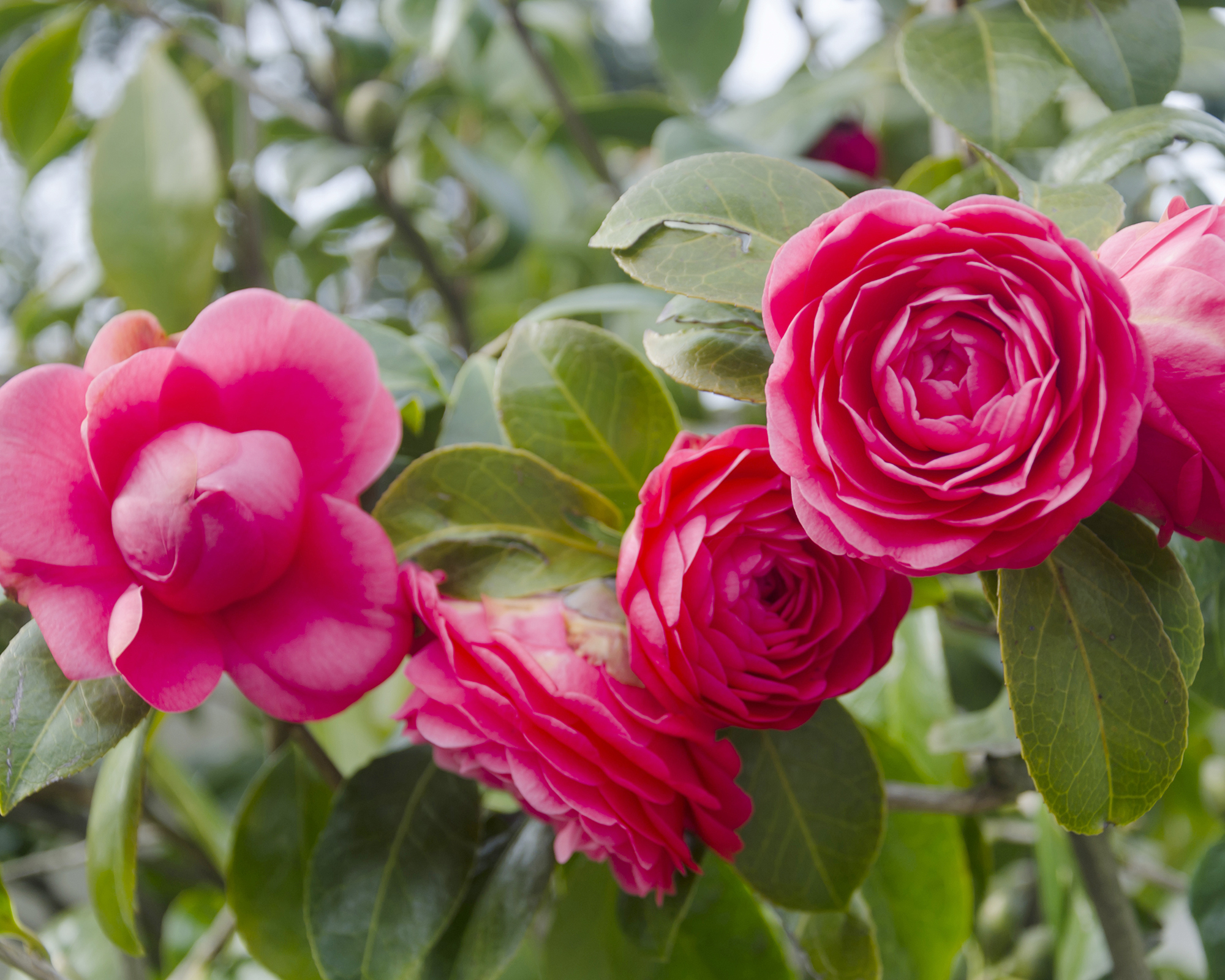
‘With winter blooms and shiny green leaves all year, camellias begin their dazzling display of richly petaled blooms in the fall, bringing color, cut flowers, and visual appeal to your landscape in the coldest months of the year,’ says Kip McConnell, director of Southern Living Plant Collection.
He particularly recommends October Magic Ruby Camellia, which flowers from fall through early to mid winter. ‘It offers brilliant red double blooms across deep olive green, super glossy foliage,' he says.
A compact grower, Ruby is a convenient semi-dwarf but with a soft, romantic appearance, maturing to 3-4’ high by 4-5’ wide. It thrives in USDA zones 7a-9b.
5. Winterberry
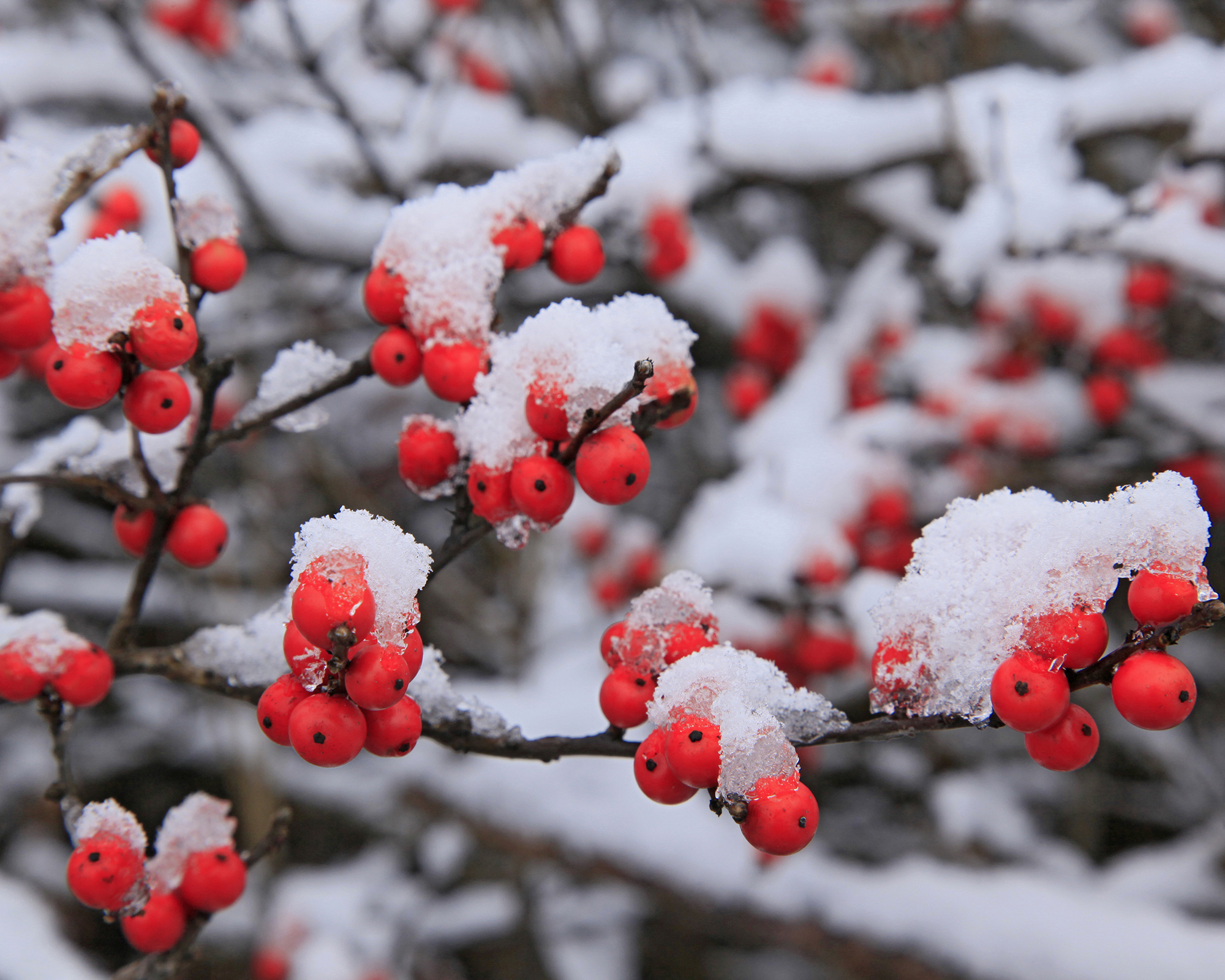
‘Winterberry holly (Ilex verticillata) is a standout deciduous plant for the winter landscape, chiefly due to its striking red berries,’ says Gene Caballero, co-founder of Greenpal.
‘These berries emerge in stark contrast against the snowy backdrop after the plant loses its leaves in the fall. They bring so much life to the otherwise dormant winter garden.’
Winterberry prefers acidic, well-drained soil and a spot with full to partial sun exposure. It's important to plant both male and female plants nearby for cross-pollination, which is essential for berry production.
‘The plants don't require extensive maintenance, but consistent watering during dry periods and occasional pruning to maintain their shape and promote healthy growth are beneficial,’ adds Gene.
6. Japanese stewartia
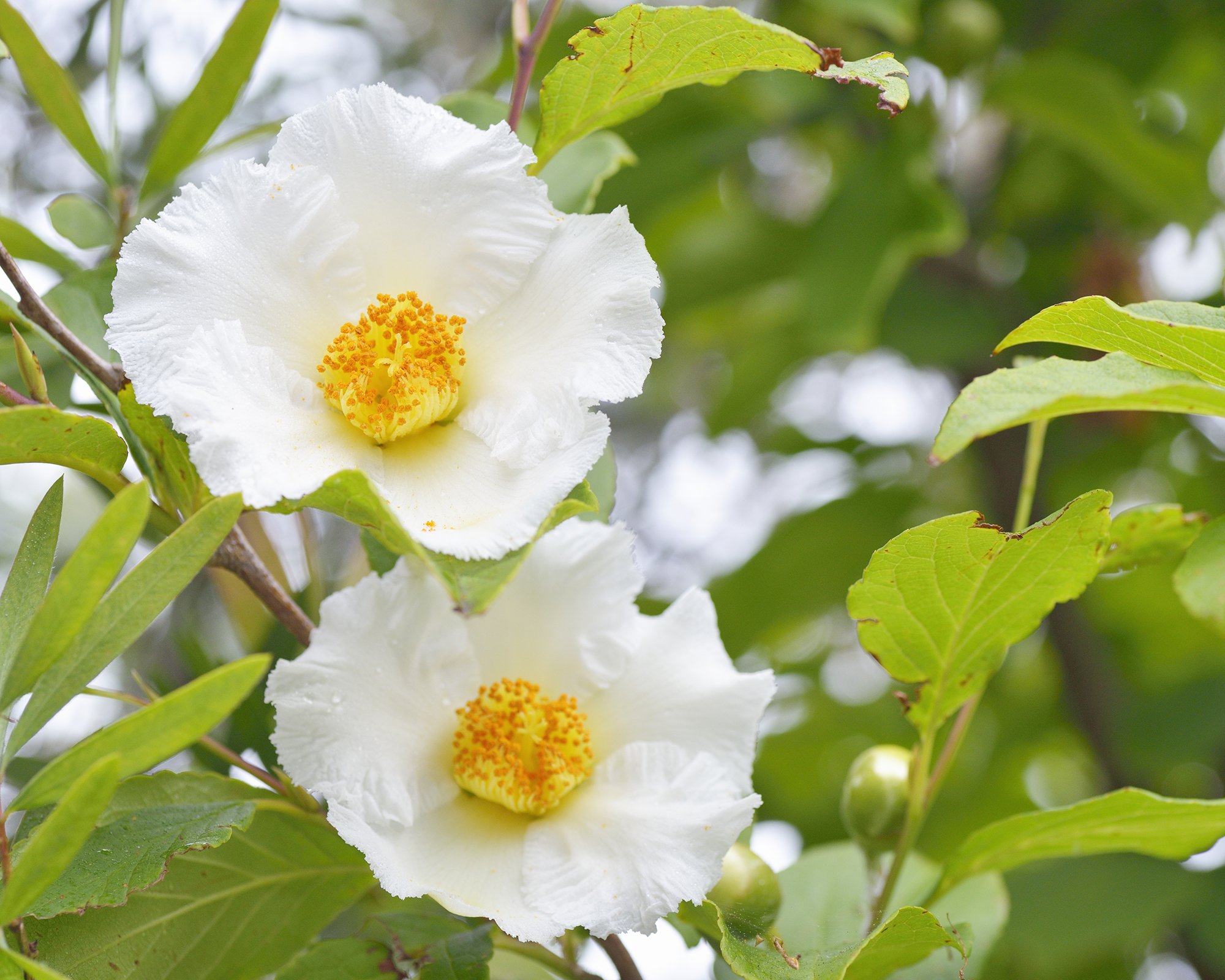
‘Japanese stewartia (Stewartia pseudocamila) is truly a four-season plant,' says Ali McEnhill. 'Light green foliage emerges in spring and is followed by large, white camellia-like flowers in summer. Fall brings bold red and orange foliage. Finally, the leaves drop and expose the exfoliating bark on mature growth; new growth shines a beautiful deep red all winter long.'
‘The red of the new growth rivals that of red-twig dogwood, but it is so much better as you don’t need to worry about coppicing the stems every few years, as you do with dogwood.’
Japanese stewartia thrives in zones 5 through 8, and is easy to grow in most soil conditions in full sun.
7. Hellebores
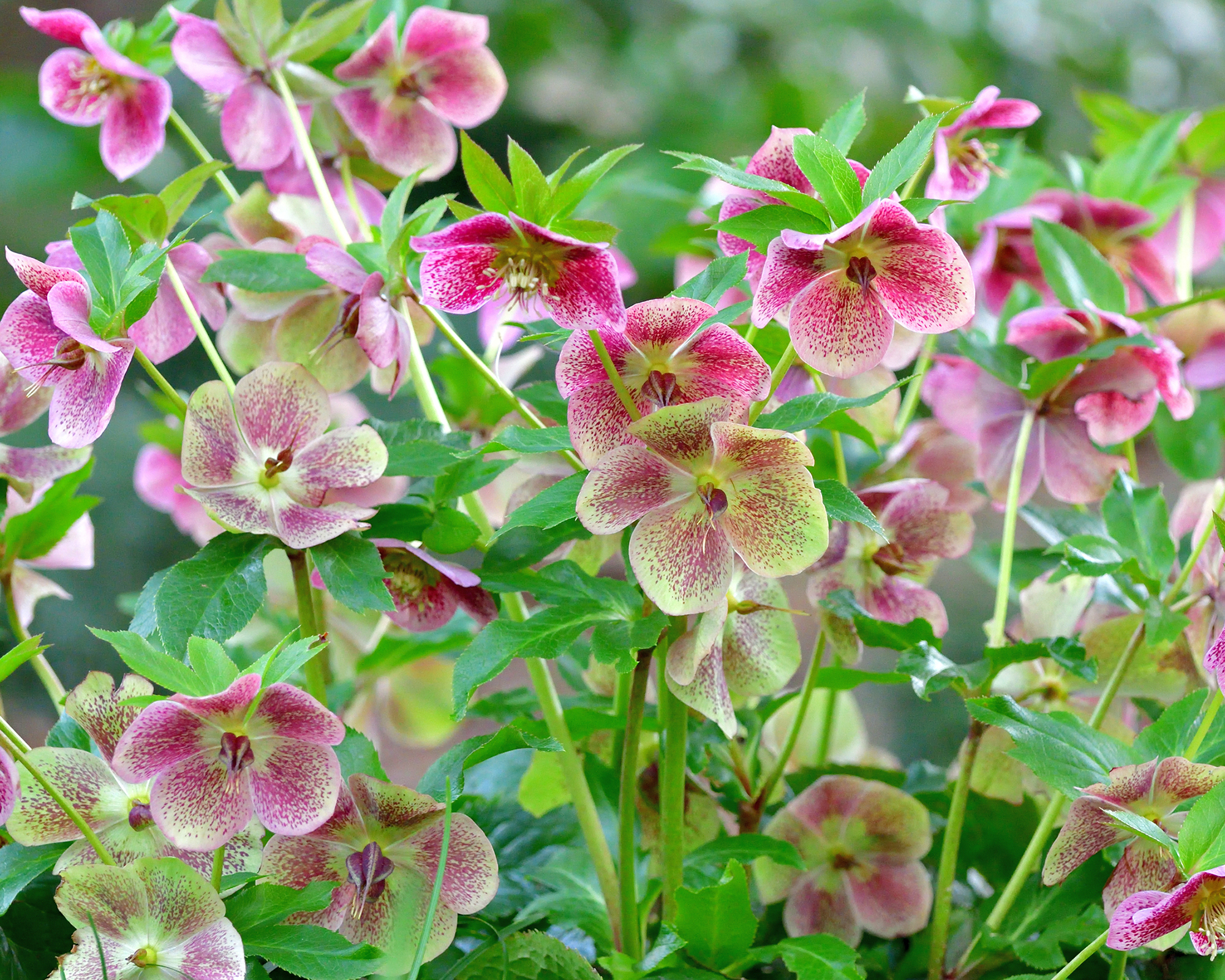
With an ethereal quality, hellebores are such a beautiful addition to the winter garden.
‘They bloom over an exceptionally long time, from late winter into spring,’ says Janet Loughrey. ‘Cup-shaped flowers occur in a nearly endless range of colors, from yellow to nearly black, in speckled or striped patterns, and single or double forms.’
Other than winter pruning and deadheading when flowers are spent, these long-lived perennials need little supplemental care.
‘Remove the previous year’s foliage before plants develop flowers to showcase the blooms and create a tidier appearance,’ adds Janet. ‘New foliage provides attractive year-round color long after the flowers have faded.’
You can grow hellebores in USDA hardiness zones 3-9.
8. Pansies
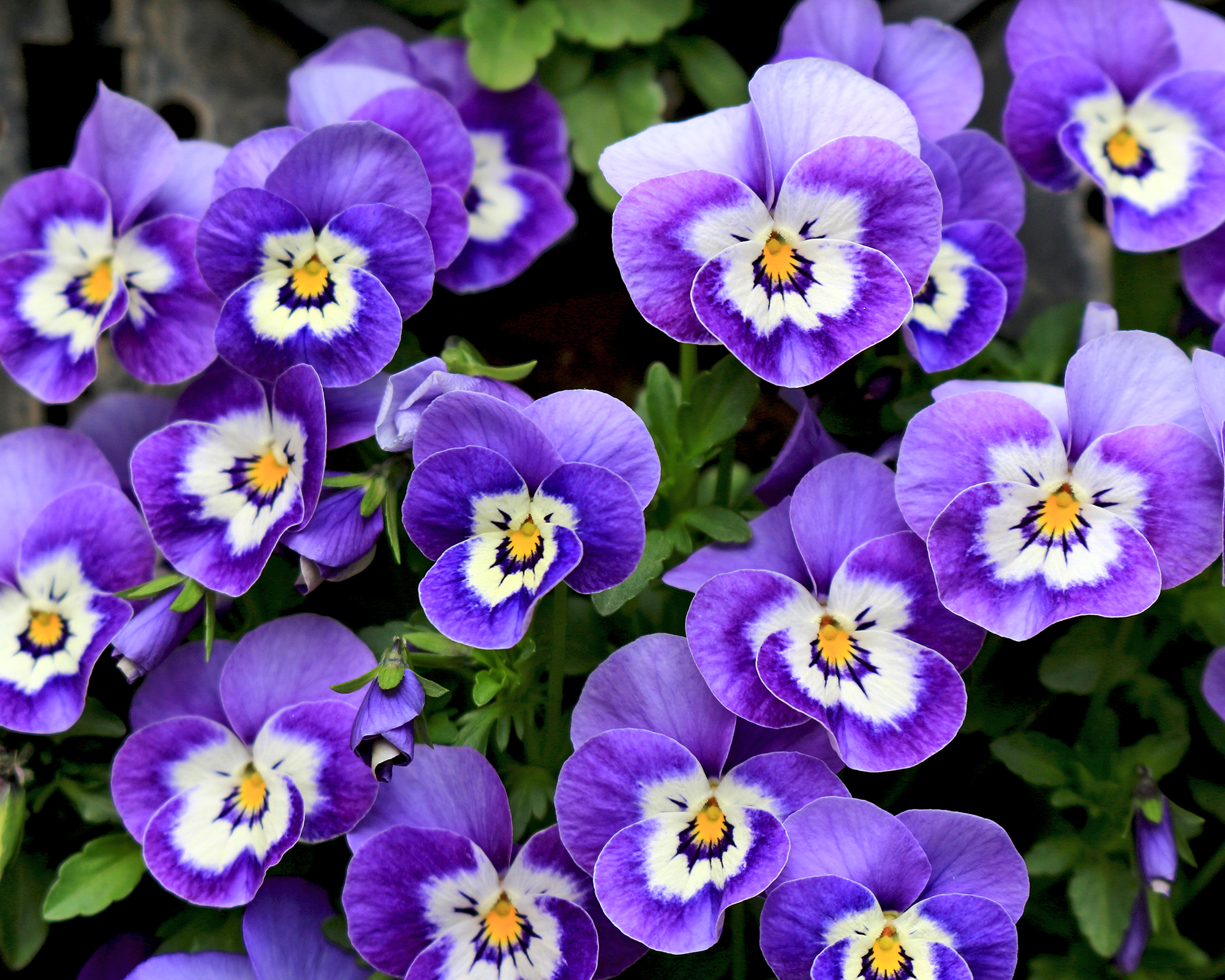
‘Pansies are a favorite for their resilience in cold weather and their ability to flourish in a range of vibrant colors,’ says Gene Caballero. ‘Displaying deep purples and blues to bright yellows and reds, they can light up any winter garden.’
While pansies are cold-tolerant, they benefit from being planted in a sunny spot during winter. They thrive in rich, well-drained soil and benefit from frequent watering.
‘Regular deadheading, or removing spent blooms, will encourage new flowers to grow, thus extending their blooming period,’ adds Gene.
‘Pansies' versatility also allows for container planting, making them a flexible choice for adding color in various garden settings.’
9. Contorted hazelnut tree
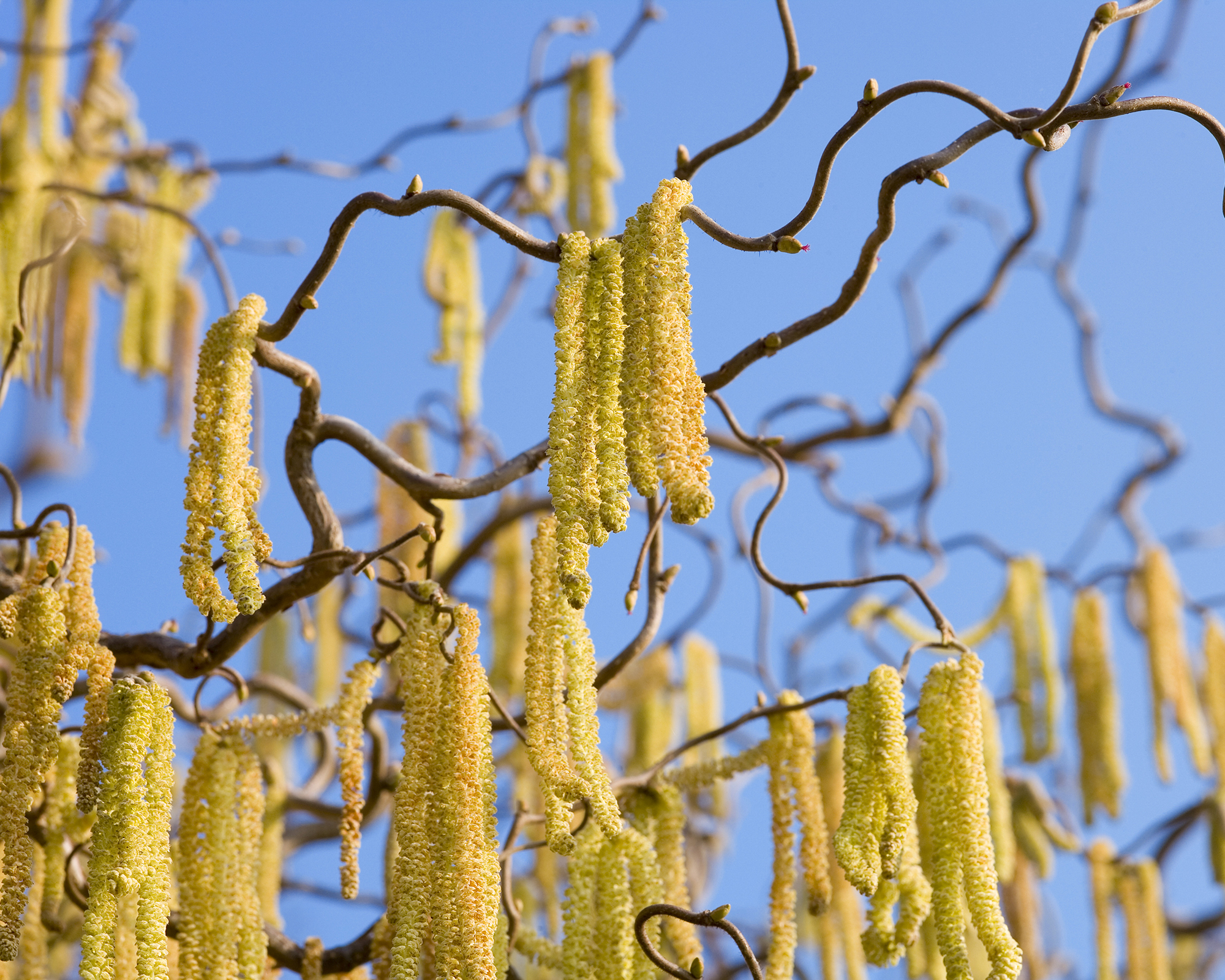
The contorted hazelnut tree (Corylus avellana ‘Contorta’) is commonly known as Harry Lauder’s walking stick, due to its twisted branches.
‘The twisted branches form a living sculpture in the garden,’ says Ali McEnhill. ‘Harry Lauder’s walking stick is my favorite plant, but it is somewhat rare.
‘It is difficult to propagate and is prone to the dreaded Eastern Filbert blight, but, oh, is it worth growing if you can find it!
‘Dangling, yellow catkins grace the bare branches in late winter – adding yet another interesting and colorful element, before crinkled foliage emerges.’ In time, the catkins turn into edible hazelnuts.
The contorted hazelnut tree is easy to grow in hardiness zones 3 through 9 in well-drained, fertile soil. The tree accepts acidic or alkaline soil and can be planted in full sun or partial shade.
10. Sweetbox

‘Sweetbox (Sarcococca) is an evergreen shrub that provides year-round color in shady areas,’ says Janet Loughrey. It’s also known as Christmas box due to its lovely winter blooms.
‘Plants produce small intensely scented white flowers in late winter that can perfume an entire yard. These flowers are followed by attractive shiny black berries.’
Growing sweetbox is very easy – the plants prefer rich, well-draining soil and protection from desiccating winds.
Plants grow up to 5 feet (1.5 m.) in height but can be pruned for more compact foliage. Sweetbox thrives in zones 7-9.

Melanie is an experienced gardener and has worked in homes and gardens media for over 20 years. She previously served as Editor on Period Living magazine, and worked for Homes & Gardens, Gardening Etc, Real Homes, and Homebuilding & Renovating. Melanie has spent the last few years transforming her own garden, which is constantly evolving as a work in progress. She is also a passionate organic home grower, having experimented with almost every type of vegetable at some point. In her home, Melanie tends to an extensive houseplant collection and is particularly fond of orchids.
-
 Creative Ideas For Plant Containers: 7 Ways To Save Money And Add Charm To A Garden
Creative Ideas For Plant Containers: 7 Ways To Save Money And Add Charm To A GardenIf you are looking for great ways to add personality to your container gardening – and even save yourself some money – then try these creative ideas for plant containers
By Mary Ellen Ellis
-
 How To Make A Bouquet Garni Or Herb Bundle For Cooking
How To Make A Bouquet Garni Or Herb Bundle For CookingIf you’re a great cook, you may have made an herb bundle before. If this is a new idea, learn how to add sparkle and interest to your dish with a bouquet garni.
By Amy Grant